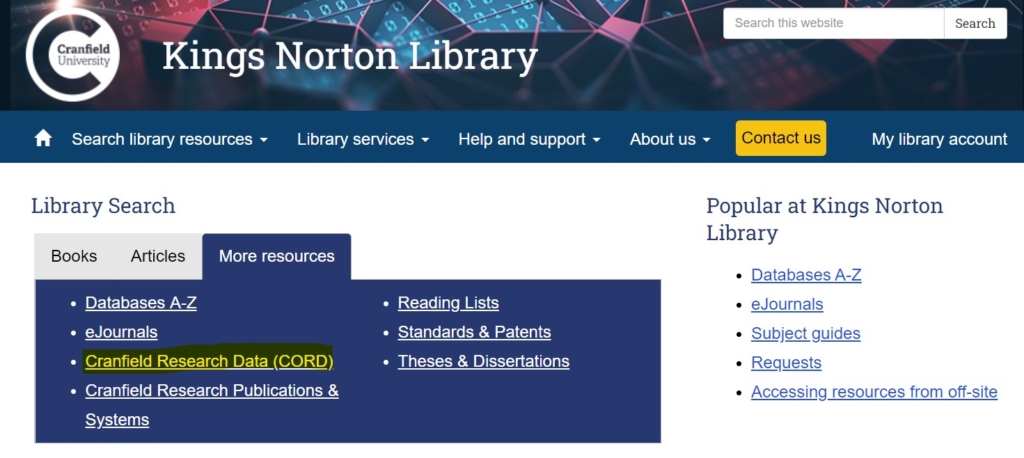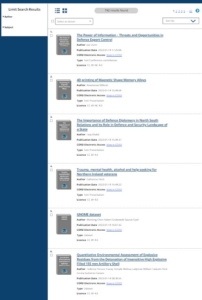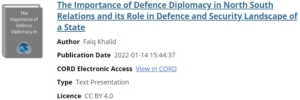CORD datasets are now available in Library Search
18/01/2022

Including research data in your research process can bring many benefits; these include greater visibility for data creators, a more transparent research process, and opportunities to identify potential collaborators. With the inclusion of CORD data sets within Cranfield’s Library Search it’s now possible to search for CORD data along with a range of other Library resources.
When referring to digitally born material, a dataset is a set of data, represented in any digital format, that together have a meaning. These sets of data are available for computer processing in one or more digital formats. Datasets are not just limited to being a matrix of text or numbers; they can also contain collections of sounds, images or videos, combining different forms of information (Vericad, 2019).
Datasets must also have accompanying documentation which explains their use and significance. Alongside the datasets you can discover in CORD, you will also find posters, presentations, software and conference contributions. All of these item types are accompanied by metadata that describes their relevance and often, too, details of the research publication associated with the data.
You can access Cranfield Research Data (CORD) by navigating to the home page of either the Kings Norton Library or Barrington Library and selecting this option under ‘More resources’.

When selecting the link above you will be presented with a current list of items available in CORD:

Individual records include information about the licence under which the item is made available. More information about Creative Commons Licences is available should you want to re-use any data. By clicking ‘View in CORD‘ you’ll be directed directly to the item’s record in Cranfield’s CORD data repository.

If you’d like to find out more, or for any questions you might have, please contact our Research Data team: researchdata@cranfield.ac.uk
Reference:
2019. JJ Boté Vericad. ‘Dataset Management as a Special Collection’. http://diposit.ub.edu/dspace/bitstream/2445/134797/1/690235.pdf
Photo by Kaleidico on Unsplash
Categories & Tags:
Leave a comment on this post:
You might also like…
Introducing…. BankFocus (Orbis)
For anyone researching the financial sector, BankFocus is a great place to start, providing financial and company data for finance institutions and companies from across the world. The service allows you to search for a ...
The Implications of US Tariffs on global supply chains
US President Donald Trump's new tariff policies announced on April 2, 2025 are expected to cause significant disruptions to the global supply chains, affecting multiple sectors and countries. A simple mathematical equation uses a country’s ...
Mastering the art of revising your writing
You’ve done the research and written your first draft. Now it’s time for one of the most crucial jobs as a writer - revising your writing to ensure your reader does not have to work ...
A ‘hands-on’ take on warehouse design as part of my Logistics and Supply Chain MSc
As part of my core module for my Logistics and Supply Chain Management MSc, I had the amazing opportunity to work on a warehouse design project a few weeks ago. The problem statement for ...
Thinking about your literature review?
As part of your PhD or Master’s thesis, you will probably have to write a literature review. A successful literature review will offer an analysis of the existing research in your field, demonstrating your understanding ...
A beginner’s guide to sourcing a company beta
Beta is the measurement of a company’s common stock price volatility relative to the market. If you’re trying to find a current beta for a company there are a number of places to look. These ...






